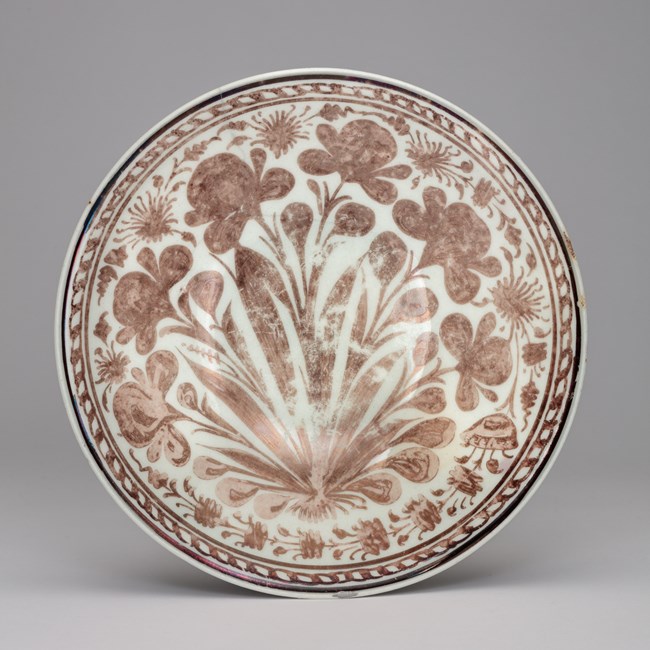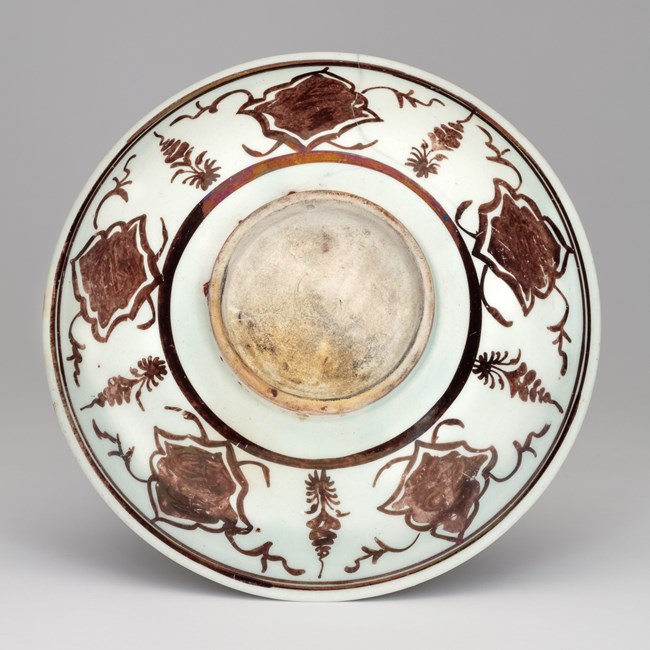
Safavid Lustre Dish
Safavid Lustre Dish
Persia, Second half of the 17th century
21.5cm diameter
Stock no.: A4881
Safavid Lustre Dish
This fritware dish with a short ring-foot is decorated with copper lustre over a white ground. The central design consists of large leafy stems with blossoms, surrounded by smaller leaves and ferns. The composition is framed by a thin chain band. The reverse bears five escutcheons alternating with grassy-plant motifs.
Lustre-ware ceramics were greatly produced in Iran throughout the twelfth to fourteenth centuries, and again starting in the second half of the seventeenth century. During this later period the style changed, and copper became the predominant colour used for the lustre (sometimes in combination with a blue ground). Additionally, the shapes and decorative schemes looked to Middle Eastern influences rather than Chinese, unlike many other Persian ceramics of the time.
For similar examples see the Royal Ontario Museum, Toronto, Accession Number 950.157.112, and illustrated in Golombek, p. 423, cat. No. 55 (click here); and the Victoria and Albert Museum, Accession Number 986-1883 (click here).
Literature:
Golombek, L., et al. “Persian Pottery in the First Global Age: The Sixteenth and Seventeenth Centuries”, in Arts and Archaeology of the Islamic World, Volume 1, Brill, Leiden, 2014.
@AMIRMOHTASHEMI






 instagram
instagram
